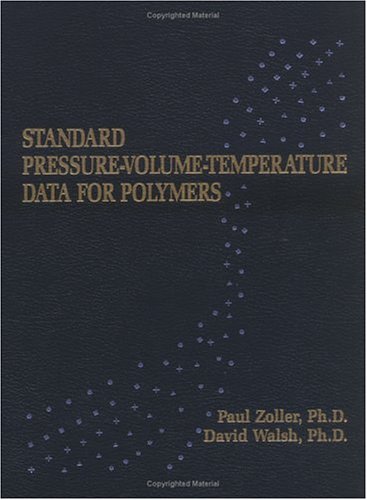From the Introduction
PVT data consists of records of the specific volume of a material (or its inverse, the density) as a function of pressure and temperature. There are many reasons why the specific volume of a material will undergo changes: changes in the temperature and pressure (thermal expansion and compression), phase changes (solid-solid phase transitions, melting, crystallization, glass transitions, mesophase transitions), degradation reactions, and many more. Conversely, PVT measurements can be used to study these phenomena and also to yield derivative data of direct importance to engineering applications of materials (compressibility, bulk modulus, thermal expansivity, etc.).
PVT methods are part of a wide array of thermoanalytical techniques available to scientists and engineers, but PVT is the only commonly practiced technique that includes pressure as a variable. Polymers are sensitive to pressure: the volume itself, the pressure dependence of transition temperatures, and the kinetics of phase transitions are all significant, not only from a scientific point of view, but also for practical applications in polymer engineering, such as processing.
Now published. This unique polymer reference book will be useful to all those involved in polymer research and advanced engineering. The more than 350 tables and graphs provide a wealth of important data in easy-to-use form. The introductory chapter provides details on methodology, equipment use, and information on the many ways in which PVT data can be used in research and engineering.
- ISBN10 1566763282
- ISBN13 9781566763288
- Publish Date 24 August 1995
- Publish Status Out of Print
- Out of Print 2 July 2021
- Publish Country US
- Publisher Taylor & Francis Inc
- Imprint CRC Press Inc
- Format Hardcover
- Pages 412
- Language English
